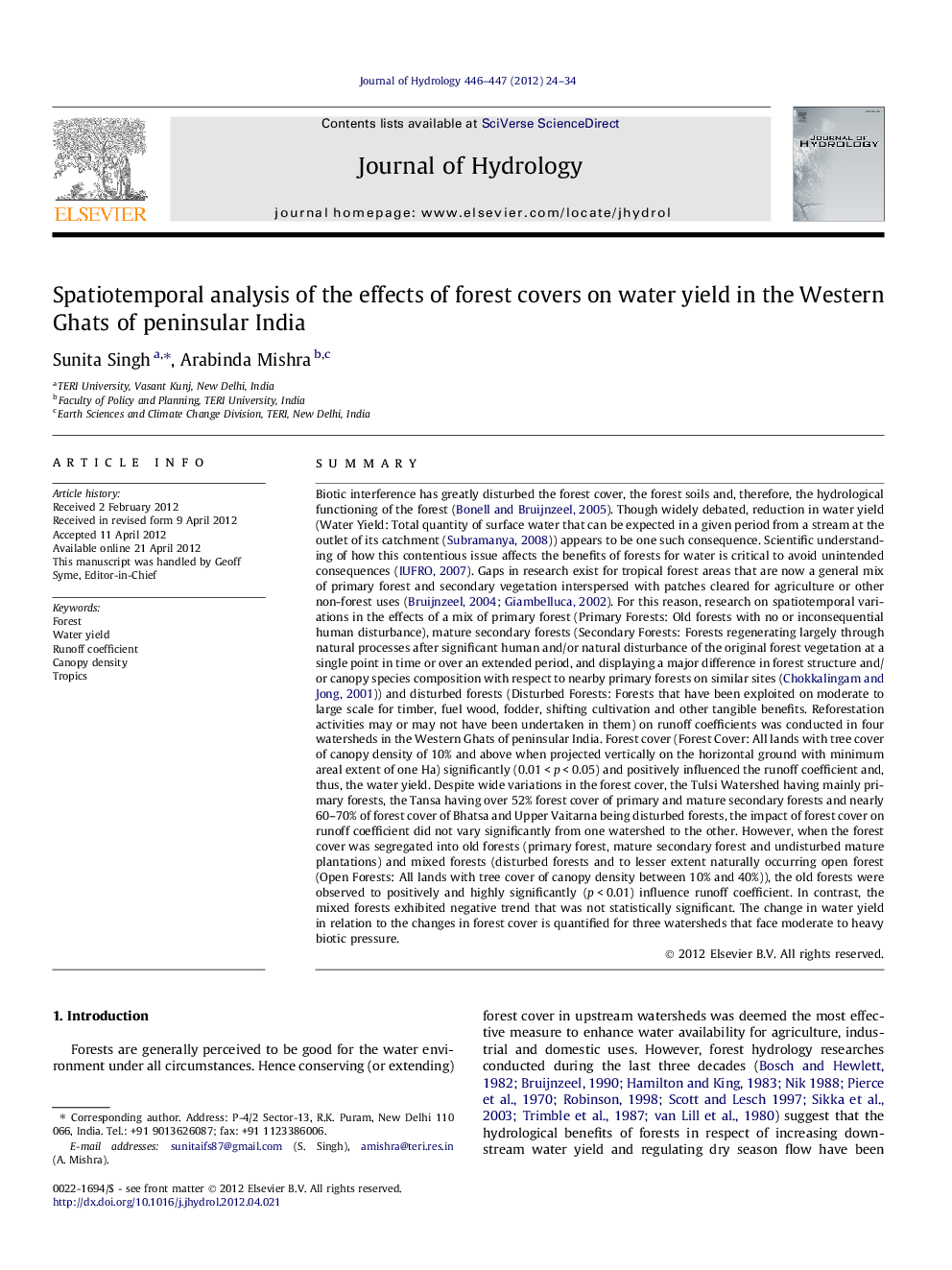| کد مقاله | کد نشریه | سال انتشار | مقاله انگلیسی | نسخه تمام متن |
|---|---|---|---|---|
| 4576934 | 1629988 | 2012 | 11 صفحه PDF | دانلود رایگان |

SummaryBiotic interference has greatly disturbed the forest cover, the forest soils and, therefore, the hydrological functioning of the forest (Bonell and Bruijnzeel, 2005). Though widely debated, reduction in water yield (Water Yield: Total quantity of surface water that can be expected in a given period from a stream at the outlet of its catchment (Subramanya, 2008)) appears to be one such consequence. Scientific understanding of how this contentious issue affects the benefits of forests for water is critical to avoid unintended consequences (IUFRO, 2007). Gaps in research exist for tropical forest areas that are now a general mix of primary forest and secondary vegetation interspersed with patches cleared for agriculture or other non-forest uses (Bruijnzeel, 2004 and Giambelluca, 2002). For this reason, research on spatiotemporal variations in the effects of a mix of primary forest (Primary Forests: Old forests with no or inconsequential human disturbance), mature secondary forests (Secondary Forests: Forests regenerating largely through natural processes after significant human and/or natural disturbance of the original forest vegetation at a single point in time or over an extended period, and displaying a major difference in forest structure and/or canopy species composition with respect to nearby primary forests on similar sites (Chokkalingam and Jong, 2001)) and disturbed forests (Disturbed Forests: Forests that have been exploited on moderate to large scale for timber, fuel wood, fodder, shifting cultivation and other tangible benefits. Reforestation activities may or may not have been undertaken in them) on runoff coefficients was conducted in four watersheds in the Western Ghats of peninsular India. Forest cover (Forest Cover: All lands with tree cover of canopy density of 10% and above when projected vertically on the horizontal ground with minimum areal extent of one Ha) significantly (0.01 < p < 0.05) and positively influenced the runoff coefficient and, thus, the water yield. Despite wide variations in the forest cover, the Tulsi Watershed having mainly primary forests, the Tansa having over 52% forest cover of primary and mature secondary forests and nearly 60–70% of forest cover of Bhatsa and Upper Vaitarna being disturbed forests, the impact of forest cover on runoff coefficient did not vary significantly from one watershed to the other. However, when the forest cover was segregated into old forests (primary forest, mature secondary forest and undisturbed mature plantations) and mixed forests (disturbed forests and to lesser extent naturally occurring open forest (Open Forests: All lands with tree cover of canopy density between 10% and 40%)), the old forests were observed to positively and highly significantly (p < 0.01) influence runoff coefficient. In contrast, the mixed forests exhibited negative trend that was not statistically significant. The change in water yield in relation to the changes in forest cover is quantified for three watersheds that face moderate to heavy biotic pressure.
► Studies the effect of mixed forest cover on runoff coefficient in tropics.
► Loss of old/mature forests observed to reduce runoff coefficient.
► Loss of forests that are largely disturbed increased runoff coefficient.
► In mixed scenario runoff coefficient net result of the individual influences.
► Tradeoff between provisioning services and hydrological services of old forests.
Journal: Journal of Hydrology - Volumes 446–447, 26 June 2012, Pages 24–34